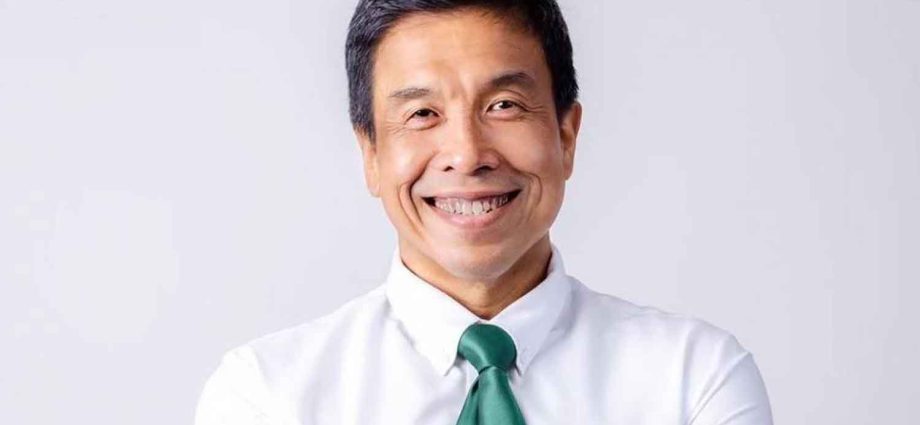
Despite encountering challenges, Bangkok governor Chadchart Sittipunt remains committed to fulfilling his promises of creating a vibrant city where everyone can thrive and enjoy a high quality of life.
It’s been 11 months since Mr Chadchart assumed his role as the new Bangkok governor, a position he took on May 22, 2022. In an exclusive interview with the Bangkok Post, Mr Chadchart evaluates his past work and the progress of his policies, while also discussing his commitment to Bangkok’s future development.
Progress so far
Back when he was competing as an independent candidate in the Bangkok governor election last year, Mr Chadchart promised to tackle Bangkok’s problems at their roots — announcing 216 policies to address the city’s issues in nine key aspects.
Apart from his public fame and professional background as the former minister of transport under PM Yingluck Shinawatra’s administration from 2012 to 2014, it was his 216 detailed policies that helped him gain support from Bangkok citizens and win the governor seat.
Mr Chadchart insisted these policies were crucial not just to his victory in the election, but also would be significant for mitigating many of the city’s chronic problems and transforming Bangkok into a more livable place for all.
“Ever since the new administrative team took charge of the Bangkok Metropolitan Administration (BMA), we have been committed to actualising the announced policies I promised during the election; these policies are the main approach to beautifying the city and improving the quality of life of its inhabitants,” he said.
“I am pleased to announce that of the 216 policies, 196 have been implemented and seen substantial progress. The remaining 20 policies are now in the process of adjustment, as they do not yet match the present situation and needs of the city.”
Mr Chadchart said the projects that have made progress are those that aim to uplift the well-being of citizens and improve the environment in Bangkok.
“During the past year, we have removed unauthorised food hawkers and vendors from 15 main roads in Bangkok to promote cleanliness and return footpaths to the pedestrians.
“We have also switched more than 7,000 street lights into LED lights to enhance energy efficiency and improve nighttime safety,” he said.
As environmental issues such as seasonal smog, rubbish and pollution problems still pose threats to the health and well-being of citizens, Mr Chadchart said the BMA has prepared many long-term measures to deal with these hazards.
Regarding smog, the BMA has inspected 1,050 factories, 133 construction sites, and over 100,000 cars to limit PM2.5 emissions.
The BMA also has set up a team of “dust detectives” — researchers from tertiary education institutes who determine the origins of PM2.5 pollution in Bangkok, which will allow the BMA to implement more precise pollution control measures at the source.
Challenges ahead
After nearly a year in office, Mr Chadchart said establishing coordination among stakeholders and finding a balance in policy implementation are the two main challenges he has faced in advancing his urban development policies.
“Since many agencies have overlapping authority over aspects of the BMA’s mission and the BMA itself has just limited power within the Bangkok Metropolis, it is inevitable that the BMA must work collaboratively with other agencies,” he said.
“However, each agency has its own priority, agenda and a different sense of urgency towards each problem. These incompatibilities are limiting collaboration between agencies and diminishing the efficiency of joint efforts.”
The government’s failure to control PM2.5 pollution in Bangkok is a clear example of a lack of proper coordination.
“As there are several agencies involved in controlling PM2.5 pollution such as the Pollution Control Department, the Ministry of Agriculture and Cooperatives, the Ministry of Transport, the Ministry of Industry, the Ministry of Energy and the BMA.
“It is impossible for BMA to act alone and solve the problem,” he said.
“So, the BMA must foster close collaboration between agencies to ensure coordination in solving the city’s problems.
“What is a city but the people? If Bangkok is to be a safe and sustainable home for everyone, we need to involve every sector, from local communities and academics to the private sector, to participate in refurbishing our capital city,” he said.
He said public participation is at heart of every BMA policy, as all stakeholders are encouraged to take part in the planning and implementation of city projects, to ensure development is in line with their needs and lifestyles.
Many policies, for instance the “15-minute park” project, cannot be accomplished without the help of local communities and the business sector.
The “15-minute park” project would expand public green spaces in Bangkok and allow every citizen to have quick and easy access to public green spaces within a 10-15 minute walking distance of their home.
“Last year, the BMA secured 107 plots of land for public green spaces as part of the project. Of these, 42 plots belong to the BMA, 38 are provided by other agencies and 27 were contributed by private sector,” he said.
“As we set the target of developing at least 30 more pocket parks every year, we need further contributions from local communities and the private sector.”
Meanwhile, balancing the impacts of city development policies is also important, because not all people will benefit.
Mr Chadchart cited the example of the footpath clearing policy, which aims to return safe and clean footpaths to pedestrians on major roads. Many food traders and street vendors are losing income, which has pushed them further into poverty. In response, the BMA is considering policies to help.

